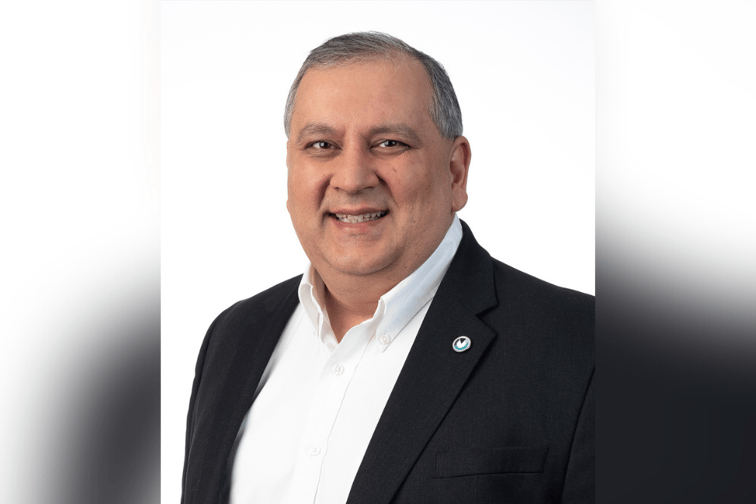

Gradient AI uses artificial intelligence to do a lot of things for the insurance industry in both underwriting and claims.
Heereen Pathak (pictured), the company’s chief technology officer, describes the technology as having multiple capabilities, thanks to artificial intelligence, machine learning and predictive analytics, among other features.
“We can basically provide predictions from an underwriting perspective to make the underwriting process better, faster and more accurate,” Pathak said. “But we have services to be able to make predictions on the claims side – we’ll identify and manage risk claims perspectives to help claims settle faster.”
This is possible, in part, due to data coming from client firms themselves, supplemented from Gradient’s own federated datasets and other third-party datasets. It’s also all on the cloud.
There are a number of specific types of insurance clients, including primary carriers, third party administrators, self-insured entities, brokers, captives, excess & surplus carriers, managing general agents, professional employers’ organizations, reinsurers, risk pools and technology providers, according to the company’s website.
CEO Stan Smith founded the Boston-Mass.-based company initially as a unique practice within Milliman focused on insurance industry risk management and other business problem issues. He acquired the business from Milliman in 2018, reworking it as an independent SaaS focused on risk management and related insurance industry challenges, the company’s website explains. Gradient has raised $30.6 million in venture capital funding to date. More than 70 employees work for the company, and that number should surpass 100 by the end of 2022, Pathak said.
Gradient views all of its customers (more than 75 to date) as partners, Pathak said, because the company works hard to understand their businesses. Some of its partnerships are more involving, however, and include added elements such as software integration.
Recently, Gradient inked a deal to partner with Socotra, maker of a platform with open APIs designed to help global insurers and insurtech MGAs accelerate product development, slash maintenance costs and boost customer experiences. The deal, announced on March 29, calls for Gradient to integrate its AI-based platform with Socotra’s cloud-based platform to help boost its capacity.
That process is ongoing, Pathak said.
Typically, Gradient’s software integrations break down into several steps.
First, the company tries to understand from a core system perspective what a partner’s workflows are like and what the best place would be to integrate its analytics to maximum benefit.
“Really, the question is where the best place is to hook into the rule system, to be able to feed in the analytics,” Pathak said. “The analytics we do really enable us to provide better execution of rules [within processes for users).”
Next, Gradient works through the API connection process. The company has a set of APIs that can be used for integration to help each side talk to each other, and they’re key, Pathak said.
“It’s the workflow interface,” he said.
Next is the data interface, making sure Gradient has good data coming into its systems, and data flowing back regarding predictive analytics.
“We want to make sure we’ve got good updates, especially in terms of the outbound side,” Pathak said. “We want to make sure we can provide updates for all the policies and all the claims, every day.”
Risk, he said, can change, or the cost of the claim can increase suddenly based on age or other factors.
“Even if nothing changed from an underwriting or adjustments perspective, [Gradient makes sure] there’s no new information that came in [that] can actually change the risks and other predictions,” Pathak said. “As we make sure, we feed that back in.”
Gradient basically builds one kind of interface to make sure high volume data traffic can go in, and then a second interface is built in real time to address more urgent data changes during underwriting.
“If there are changes happening today, especially from an underwriting perspective, that’s much more sensitive since you’re trying to get a policy written as quickly as possible,” Pathak said. “So, any updates are happening as part of the underwriting process.”
Pathak said a real-time interface is integrated and can get data analytics updates immediately back to underwriters in this scenario.
After that, most of the integration is done.
On the client side, there is effort to make sure data and configurations meet clients’ needs, and Gradient in turn makes sure it has the right models based on clients’ and other data sources. Then, Gradient does a data cleansing to make sure the data is cleansed of duplications and other imperfections.
“Once we are able to get the model in place and the client is [settled] we will share data back to the client in terms of predictions, or the quality of the predictions, and then we’re good to go,” Pathak said.
The process from start to finish takes about 90 days, Pathak said, depending on factors such as the cleanliness of the data and how many models clients are looking to put in place.
The company generally uses a contract/subscription model, based on levels of usage in terms of the numbers the analysis would provide.
